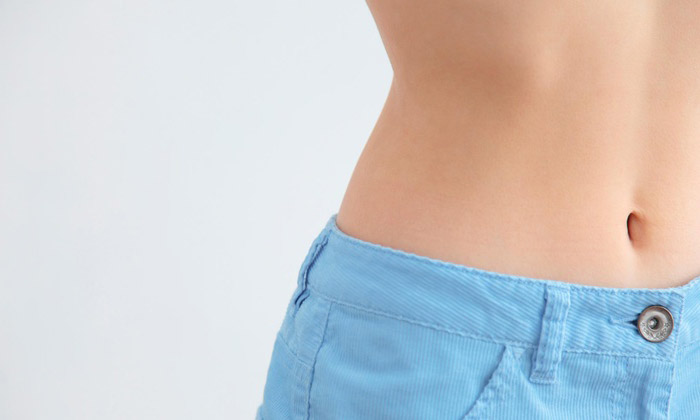
Contrary to appearances, slimming treatments are not only about getting rid of excess pounds. First of all, in an aesthetic medicine office, slimming treatments are performed. Modern aesthetic medicine has methods that allow you to remove fat reduction once and for all. And that without using a scalpel or staying in the hospital. However, slimming treatments are not a way to lose weight - you should lose unnecessary kilograms before the treatments.
Slimming treatments, performed in an aesthetic medicine office, are aimed at slimming the figure. Fat cells, which we dislike most, accumulate mainly in the subcutaneous layer, i.e. not too deep. They are easy to reach and destroy using various techniques, e.g. dissolving their coating by injecting a chemical substance under the skin, breaking them with ultrasonic waves or laser light.
Regardless of the technique chosen, the effect is always the same - irreversible destruction of fat cells, which are then removed from the body in the natural process of excretion. Such slimming treatments allow you to model a selected part of the body or even the entire figure. But...
Slimming treatment - what is it?
Modeling is not slimming! You need to be aware of this before making a decision to visit a fat removal clinic. There is no miracle treatment that will allow you to achieve the perfect figure effortlessly. Doctors' efforts must be supported by proper diet and exercise. Body shaping is the removal of excess body fat from selected parts of the body, usually from places where the fat does not want to disappear after diet or exercise. To achieve the best results, doctors recommend that you go on a diet with a significantly reduced amount of fat 2–3 weeks before the planned surgery. Classic or lymphatic massage is also recommended to relax and break the tightly packed fat tissue. This makes it easier for the body to get rid of it later.
Before performing the procedure, it is necessary to consult a plastic surgeon and perform basic medical examinations, including blood pressure measurement. It is also important to get vaccinated against hepatitis B early.
A slimming treatment: an aesthetic effect, not a health one
Removal of excess fat by liposuction (invasive liposuction) or a much more delicate lipolysis improves the appearance, but does not reduce the risk of obesity-related diseases. American scientists studied 15 women from the so-called abdominal obesity, then they performed liposuction procedures, sucking about 10 kg of belly fat each. Twelve weeks later, none of the women had improved overall results. They were still at high risk of heart attacks and diabetes. According to the researchers, such treatments only remove subcutaneous fat and do not reduce the amount of remaining fat cells. The only methods that are effective in reducing the risk of diseases are diet and exercise.
Modern slimming treatments
Slimming treatment: chemical lipolysis
(otherwise known as needle) is classified as a minimally invasive procedure. The best results are achieved by using it to shape the face and chin, but it can also be applied to larger areas of the body - hips, buttocks, thighs (so-called breeches). The treatment consists in injecting selected parts of the body with an active substance obtained from soy - phosphatidylcholine, which acts on the surface of the fat cell as a solvent.
Before the procedure, the doctor marks the places that will be modeled. Then, using thin needles, it introduces the preparation under the skin. 2–4 treatments every 6–8 weeks give good results.
Complications: redness at the site of needle insertion for several days and slight swelling. Contraindications: the procedure is not performed in children, pregnant and lactating women, patients with diabetes, with vascular and immune disorders, liver and kidney damage, obese patients and with blood coagulation disorders. Duration: 10–30 minutes. Anesthesia: not used or, on request, local. The skin is irritable for 2–3 days. Healing time for irritations: 1–2 days. Return to full fitness after 7 days. After the treatment, sunbathing should be avoided for 2-3 weeks..
Slimming treatment: laser lipolysis
(SmartLipo) is a new and safe technique developed to remove excess body fat through the action of a special laser. Through a minimal incision (1-2 mm), the doctor inserts a canipse with a laser light under the skin. It breaks down the membrane of the fat cell, thanks to which it breaks down. The procedure is performed on the shoulders, hips, thighs, abdomen, waist, buttocks, knees and calves. The best results are achieved when the fat tissue does not exceed 3-5 centimeters thick. The breakdown of fat cells is irreversible, but if we do not follow the diet, fat will be deposited in other parts of the body. The laser energy improves the condition of saggy and uneven skin, making it firmer and smoother.
Complications: slight bruising and slight swelling on the skin may persist for 2 weeks. Contraindications: morbid obesity, vascular and immune disorders, liver and kidney damage, vascular and heart diseases, diabetes, blood coagulation disorders, kidney and liver diseases. 40 minutes to 2 hours depending on the area. Anesthesia: local. The skin is sensitive for 4-7 days. After 14 days, it returns to normal life. During this time, you need to wear flexible clothing that shapes the figure. The healing time of tiny skin incisions: 3–4 days. Price: from $3,000 depending on the area, e.g. belly approx. $8,000, thighs approx. 6 thousand, hips approx. 6 thousand, back approx. 5 thousand, arms and armpits approx. 4 thousand.
Slimming treatment: ultrasounds
it is a painless breaking down of fat cells. Adipose tissue is removed without harming organs, blood vessels, and nerves. The treatment consists of two parts. The first is the destruction of fat cells. For this purpose, the doctor applies a special head to the selected part of the body and, after activating it, sends a high-intensity ultrasound beam deep into the body. Fat is released from ruptured fat cells and penetrates into the intercellular space.
Now it's time for the second stage of the procedure, i.e. lymphatic drainage. For this purpose, six ultrasonic heads are used, which work sequentially. The result is an accelerated removal of accumulated fat from the body.
Complications: no side effects have been reported. Contraindications: pregnancy, neoplastic diseases, thrombophlebitis, haemophilia, psoriasis, acute inflammations, implanted pacemakers or metal implants. Duration: 15–40 minutes. Anesthesia: not used. The skin is hypersensitive 2–3 days. Irritation healing time: 1 day. Recovery after 7 days. Price depending on body location: 3 abdominal treatments approx. 1.8–2 thousand, 6 treatments for the abdomen and thighs approx. 4.8 thousand.
Slimming treatment: what happens to fat cells after the treatment?
Depending on the metabolic rate, the body needs about 2 months to expel the fat released during the treatments. Is it not putting too much strain on the liver and how does this process work? The fat stored in the fat cell is in the form of triglycerides. Each molecule of this compound consists of three fatty acids attached to glycerol. When we destroy a cell, these compounds find their way into the intercellular fluid and from there into the bloodstream. They travel with blood and are taken up by various tissues for which they are a building material or source of energy.
The unused fat after metabolic changes and after combining with other substances, e.g. albumin, reaches the liver. Since it does not distinguish which fat comes from damaged cells and which fat comes from food, it processes it routinely. In other words, the fat released during the treatments is processed through the normal processes that nature has created in our body to transport, process and excrete fat. The liver only needs to work a little more intensively, but it does not impair its physiological functions in any way. To make her task a bit easier, we should be on a low-fat diet before and after the procedure.





